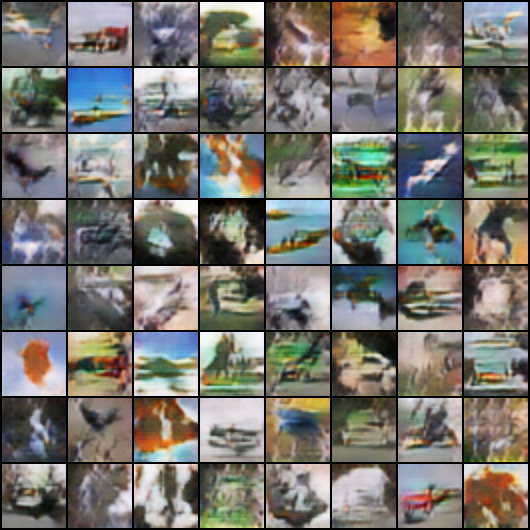This is a PyTorch implementation of 'prediction method' introduced in the following paper ...
- Abhay Yadav et al., Stabilizing Adversarial Nets with Prediction Methods, ICLR 2018, Link
The authors proposed a simple (but effective) method to stabilize GAN trainings. With this Prediction Optimizer, you can easily apply the method to your existing GAN codes. This impl. is compatible with most of PyTorch optimizers and network structures. (Please let me know if you have any issues using this)
- Import prediction.py
from prediction import PredOpt
- Initialize just like an optimizer
pred = PredOpt(net.parameters())
- Run the model in a 'with' block to get results from a model with predicted params.
- With 'step' argument, you can control lookahead step size (1.0 by default)
-
with pred.lookahead(step=1.0): output = net(input)
- Call step() after an update of the network parameters
-
optim_net.step() pred.step()
-
- You can find a sample code in this repository (example_gan.py)
- A sample snippet
-
import torch.optim as optim from prediction import PredOpt # ... optim_G = optim.Adam(netG.parameters(), lr=0.01) optim_D = optim.Adam(netD.parameters(), lr=0.01) pred_G = PredOpt(netG.parameters()) # Create an prediction optimizer with target parameters pred_D = PredOpt(netD.parameters()) for i, data in enumerate(dataloader, 0): # (1) Training D with samples from predicted generator with pred_G.lookahead(step=1.0): # in the 'with' block, the model works as a 'predicted' model fake_predicted = netG(Z) # Compute gradients and loss optim_D.step() # (2) Training G
with pred_D.lookahead(step=1.0:) # 'Predicted D' fake = netG(Z) # Draw samples from the real model. (not predicted one) D_outs = netD(fake)
# Compute gradients and loss
optim_G.step()
pred_G.step() # You should call PredOpt.step() after each update
```
You can find more images at sanghoon#3 and sanghoon#4
| Vanilla DCGAN | DCGAN w/ prediction (step=1.0) |
|---|---|
 |
 |
 |
 |
| Vanilla DCGAN | DCGAN w/ prediction (step=1.0) |
|---|---|
 |
 |
 |
 |
| Vanilla DCGAN | DCGAN w/ prediction (step=1.0) |
|---|---|
 |
 |
 |
 |
- GitHub repo. mentioned in the paper (https://github.com/jaiabhayk/stableGAN)
- Empty by the date of this README.md update.
- Another impl. for PyTorch (https://github.com/shahsohil/stableGAN)
- From the name of the repository owner, I guess it's written by one of the paper authors. (not 100% sure)
- Currently supports ADAM only.
- : Impl. as an optimizer
- : Support pip install
- : Add some experimental results